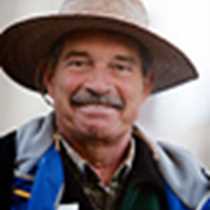Glacier Bay National Park
Southeastern Alaska is one great temperate rain forest. Yes, rainforest. That is the reason it is so green, it has these magnificent forests of tall Sitka spruce and western hemlock, with some Alaska yellow cedars and red cedars. Today we had the real Alaska weather, gray day, foggy and with a sprinkling of soft rain here and there. And we were in Glacier Bay National Park, which is just on the other side of the great Fairweather Range Mountains, which faces the open Pacific. They bring in enormous quantities of water from the ocean.
As we began our long journey up Glacier Bay (really a very long, 65-mile fjord), wildlife searching became the rule for the day. Humpback whales blowing, a marvelous group of “transient” killer whales, also called whale killers, three young males, easily recognizable, maybe a total of seven individuals. Also sea lions, sea otters and an array of seabirds, including gulls, cormorants, pigeon guillemots, different species of murrelets, etc were spotted as well. After breakfast we were already at South Marble Island, probably the best place to see different birds, as well as a good group of Steller sea lions!
On we sailed. Later, at a marvelously named mountain, Gloomy Knob, we saw mountain goats, two females with kids and shortly thereafter, a bear. Wildlife galore!
Eventually we arrived at our final destination, the end of the fjord, at the great glacier called the Grand Pacific, which is the one that created the fjord. It is all black from the enormous amounts of gravel and sand, called a moraine, from the later glacier known as the Ferris Glacier. But at the side of this monster, which is stable, more or less, lies a smaller glacier, Margerie, white and bluish, one of the few holding glaciers in Alaska. We held our position in front of it for around an hour, and saw a good calving event, which is when a piece of the front breaks off, falling into the water and creating a very loud explosion sound, called “white thunder” by the natives. We continued our trip, now beginning our southward bound leg down the fjord, among the fog and slight rain. Soon we were at the Lamplugh Glacier, also bluish. Further ahead was the Reid Glacier, the last large glacier we observed today.
Sailing even further south we saw different birds, and to our incredible luck, we saw two or three wolf cubs on the beach, which we observed for a good time.
At the end of the day, we were already at Bartlet Cove, the headquarters of the Wildlife Service of the park. Here we hiked for a short time along a wood with heavily damaged Sitka spruce. We watched as a beetle burrowed into the inner bark of a tree, introducing a fungus that will eventually kill the tree!




